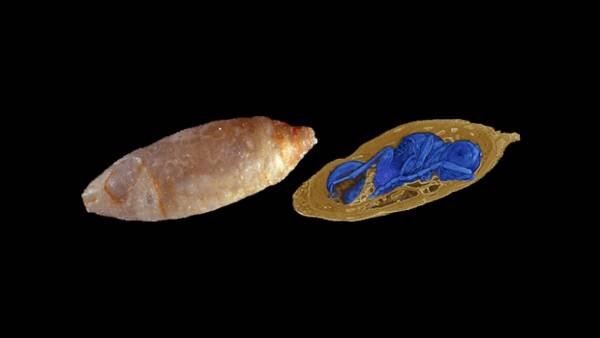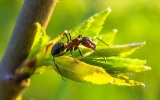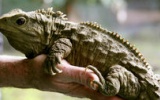Scientists found parasitic wasps age of 60 million years and named them in honor of someone else
European scientists found in fossilized larvae of flies, which were stored in the museums of Sweden and Switzerland, parasitic wasps four new species is the first whole the fossils of the OS that were found by paleontologists.
Upstairs
Some of the new species was named after the main character of the film about someone else, according to a paper published in the journal Nature Communications.
News Scientists study fungi-killer, zombie insects
Scientists study fungi-killer, zombie insects
As noted in the article, although nearly 50 percent of the animal parasites found in the fossil remains traces of parasitism is very difficult because of the need to show the interaction between the two organisms. In particular, wasp-parasitoid be from 10 to 20 percent of all living insect, but scientists have found only adult wasps and larvae of undetermined species in the amber next to their owners. The only trace of the parasite larvae inside was a thin slice of the fossil by the age of 30-40 million years, found in the French region of Quercy.
Thomas van de Kamp (Thomas van de Kamp) of the Karlsruhe Institute of Technology and his colleagues studied 1.5 thousand fossilized larvae of the Paleogene period (23-66 million years ago) found on the territory of modern France in the same region of Quercy and stored in Museum collections of Basel and Stockholm.
The researchers used x-ray microtomography at the synchrotron radiation, which helped them to “see” inside the larvae, without destroying them, and to make a three-dimensional reconstruction of the OS inside the larvae.
The authors were able to detect 55 the larvae traces of female and male wasps endoparasites of four previously unknown species — they are called Xenomorphia resurrecta (to this type belong 42 of 55 found OS), Xenomorphia handschini, Coptera anka and Palaeortona quercyensis.
News Evolution of monsters: a natural selection ruthlessly mutilates animals
Evolution of monsters: a natural selection ruthlessly mutilates animals
Rod Xenomorphia is named after the title character of the movies Alien and species name resurrecta reminiscent of a “digital resurrection” of extinct species. The second species of the same genus is named in honor of Swiss entomologist Eduard Handshin, who discovered the first traces of parasitic wasps in the fossil record of Kersey. All wasps belong to the family of diapriids (Diapriidae).
Part of the OS is preserved well enough to be able to determine their age: 19 OS with folded wings, scientists think the larvae at a late stage of development, and 20 adults of insects. Each species differently adapted to their hosts: for example, Coptera anka and Palaeortona quercyensis differ from “colleagues” form of the antennae, wings and petiole (this is segment of the insect’s body that connects the abdomen with the chest, or thorax) — so they’ve adapted to life on earth, say the authors.